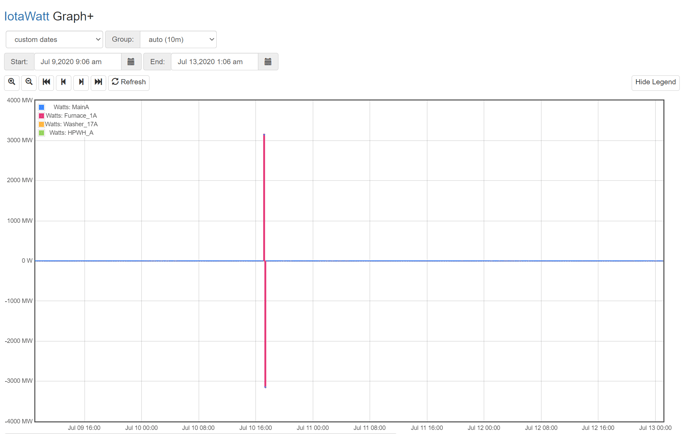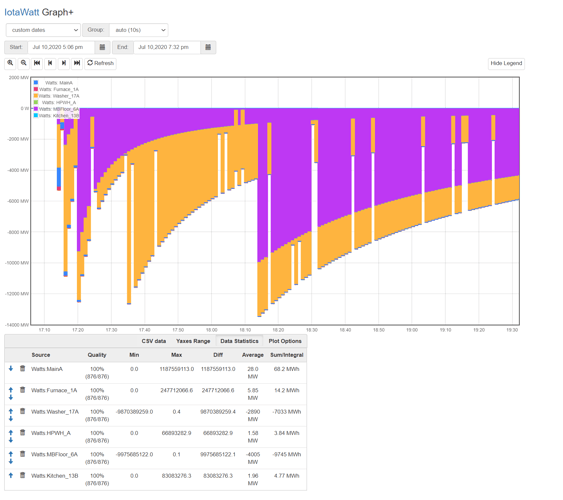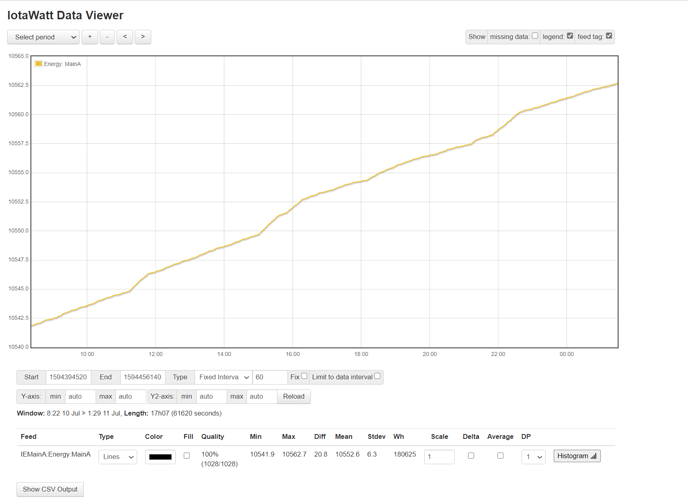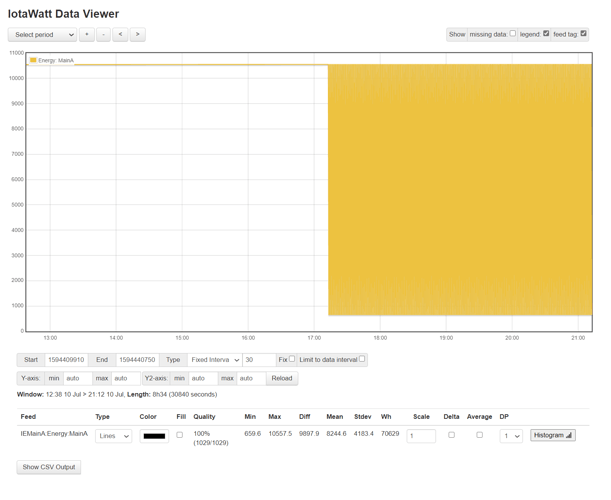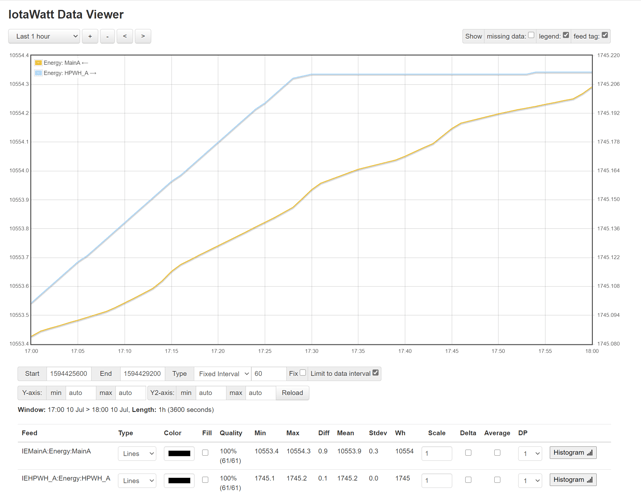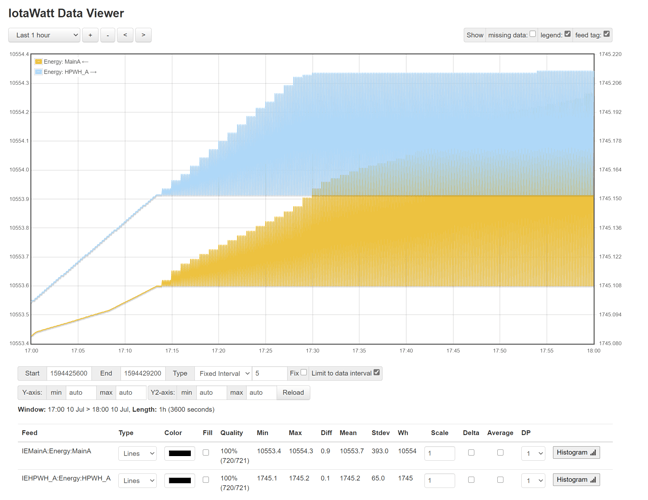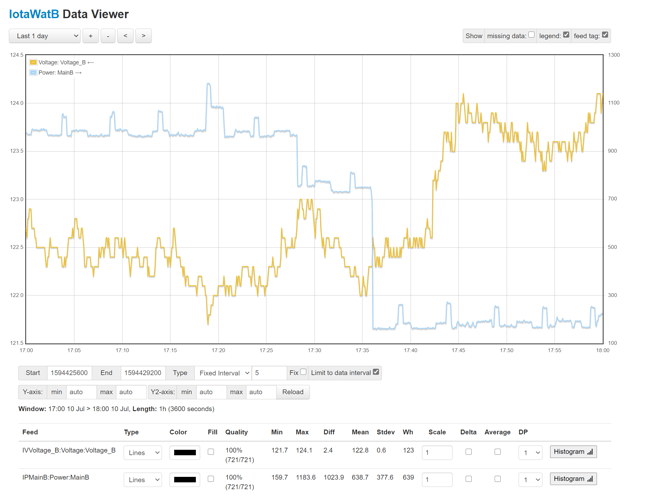So, I am finally getting around to setting up influxdb. I have two IotaWatt devices that have been collecting data for a long time. It appears that only data from the Current Log is able to be sent to influxdb, which is fine with me (most of the data is not really that interesting). Anyway I have IotaWatt which is on the A leg. It says:
Current Log from: 6/22/2020 1:45:15 PM to: 12/2/2020 11:48:25 AM
IotaWatB is on the B leg, it says:
Current Log from: 12/3/2019 11:50:10 AM to: 12/2/2020 11:50:05 AM
After a few false starts, I started them both on the same influxdb instance. A is sending 15 measurements (14 channels of Watts and 1 of Volts). B is sending 14 measurements (13 channels of Watts and 1 of Volts).
The last bit of B’s log is this:
12/01/20 08:25:53 influxDB: started, url=HTTP://192.168.1.192:8086, db=power, interval=10
12/01/20 08:25:54 influxDB: Start posting at 01/01/19 00:00:10
12/02/20 07:19:56 Updater: Invalid response from server. HTTPcode: -4
A’s log has this:
12/01/20 08:26:16 influxDB: started, url=HTTP://192.168.1.192:8086, db=power, interval=10
12/01/20 08:26:18 influxDB: Start posting at 01/01/19 00:00:10
As you can see, they both started posting at about the same time (yesterday morning)
B has posted from mid December 2019 to almost May 2020 (almost 5 months)
A has posted from mid June 2020 to almost mid July 2020 (about a month)
Any idea what is going on?
No errors indicated in the log. Both are in the same location. RSSI is a little better for A, but B is generally at -76dB
 )
)
